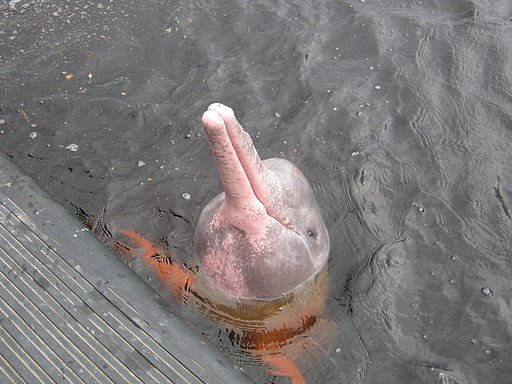
Pink dolphin or Amazon river dolphin are common names given to several species of the genus inia that inhabits the rivers of the Amazon basin and the Orinoco River basin in South America. Some of these species of aquatic mammals are Inia geoffrensis, Inia Boliviensis, and Inia araguaiensis, but there are others.
At the beginning of the 21st century, little was known about the pink dolphin, although it was already considered a highly endangered species (Hamilton, 2001).
Characteristics of the Amazon pink dolphin
Pink dolphins are typically 6 to 8 feet long and weigh 185 to 355 pounds. They are smaller than sea dolphins and have a longer snout, an evolutionary adaptation that is useful for finding food on the river bottom.

Source: Nortondefeis[CC BY-SA 4.0 ]
Unlike sea dolphins, river dolphins can move their necks and rotate their heads.
These animals also have more pointed teeth than sea dolphins. And they have what resembles fingers on the ends of their fins and their dorsal fin is much smaller.
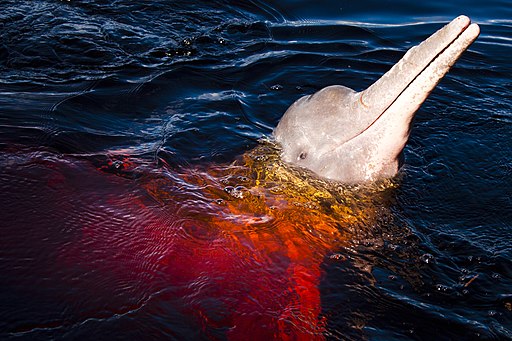
Source: Mônica Imbuzeiro[CC BY-SA 4.0].
The eyesight of Amazon river dolphins has evolved to adapt to turbid waters. It could be said that it has adapted to its habitat, even modifying the morphology of its visual apparatus.
The eyes of these dolphins are tiny compared to those of other dolphins and although their visual acuity is low, it is considered sufficient for the turbid waters in which they move where they can only distinguish objects at close range.
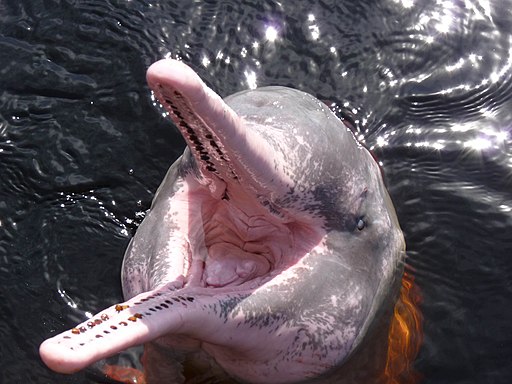
Source: Lcainbinder[CC BY-SA 4.0].
Amazonian pink dolphin population
The exact population of pink dolphins living in the rivers of the Amazon-Orinoquia basin is uncertain, however experts estimated in 2007 that their total number could range between 3 and 5 million specimens(Ruiz-García, 2007).
Unfortunately, their population has been decimated. To be exact, “it has decreased by 70.4% in the last 22 years” (da Silva et al.2018). The Amazonian pink dolphin is considered a vulnerable species, whose subsistence is being dangerously threatened.
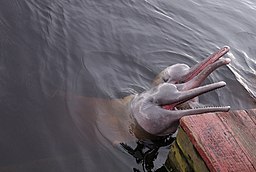
Where does the red bufeo live?
The pink dolphin can be found in many rivers of the Amazon-Orinoquia basin. In deltas or mouths, in oxbow lakes or lagoons (mothers and their young usually prefer these calmer waters), in main rivers and their tributaries, and even in waterfalls and rapids.
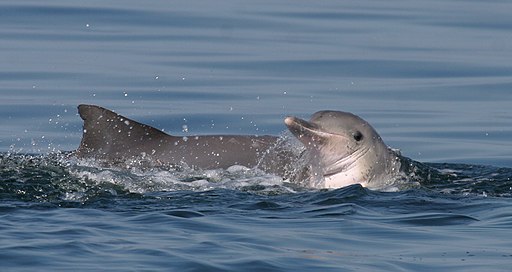
Rivers where their existence has been verified include but are not limited to the following:
Bolivia: On the Mamoré, Iruyañez, Securé, Tijamuchí, Itenez (= Guaporé), Ipurupuru Rivers.
Peru : in the Napo, Curaray, Ucayali, Tapiche, Canal del Puhinauva, Marañón and Samiria rivers.
Ecuador: in the Napo, Tigre, Pastaza and Santiago rivers.
Colombia: On the Guabiare, Bita, Putumayo and Amazon rivers.
Venezuela: In the Orinoco and Arauca rivers.
Brazil: In the Amazon, Araguaia and Tocantins rivers among many others.
In all the rivers mentioned above, several scientific studies have been carried out to verify their existence, proposing different ways of taxonomically cataloguing them into subspecies, discussing whether they should be considered monospecific or bispecific, analyzing their DNA, estimating their populations, their habitat, pointing out the serious threats to their survival, among other praiseworthy efforts to better understand this peculiar Amazonian aquatic mammal.
The echolocation system of dolphins
In 1970, a study was published which corroborated that Inia geoffrensis, like sea dolphins, has an echolocation sonar-like navigation system, like the one used by submarines to orient themselves on the ocean floor, but biological.
To carry out this study, the researchers took a dolphin from the Orinoco River to a laboratory in Hawaii where it was kept in captivity in a tank that emulated the water characteristics of its natural habitat.
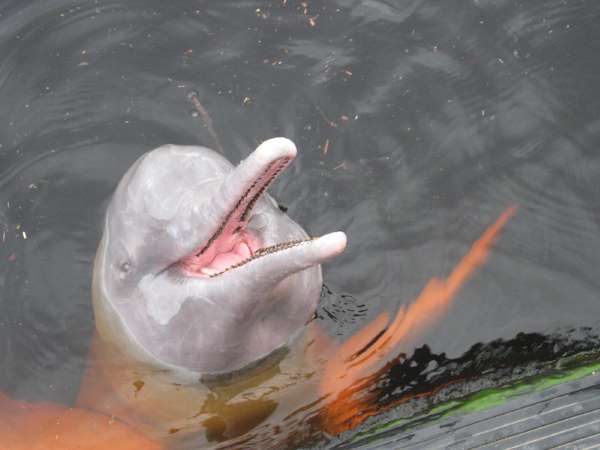
There, the specimen called IG8 was monitored 24 hours with wideband ultrasonic frequency recording devices.
Transparent acrylic obstacles were placed inside the tank, which the red-colored river dolphin dodged on its way to its target after receiving a stimulus.

Source: Paesml[CC BY-SA 3.0 ]
To the surprise of the researchers, this animal was almost never silent, in addition to its whistles used for communication and its clicks, the river dolphin emitted a “train of clicks” in ultrasonic frequency, even when it was asleep. This sequence of inaudible clicks for the human being did not stop for more than 8 seconds and its intensity ranged from 25 to almost 200 Khz.
As part of this research, it was also possible to learn about some of their behaviors.
Behavior of a pink dolphin studied in captivity.
IG8 was particularly fond of the pompano. When fed whole fish (with heads), the fish would somehow remove them before ingesting them. When given tail-less fish, the pink orinoco dolphin left it intact at the bottom of the tank and usually ate it afterwards.
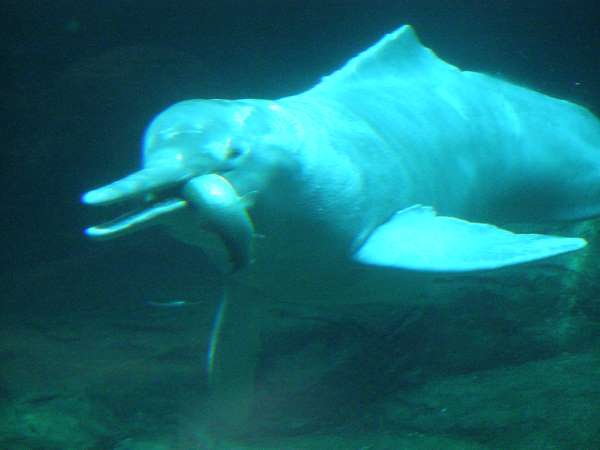
Penner and Murchison noted that when the dolphin swam upside down against the bottom of the tank it was because it had an appetite, when the dolphin snorted and expelled mucus from its nose it was often a sign of frustration, anger or stress.
They also noted 3 types of response to different sound stimuli, among them it was common for the dolphin to roll backwards, to be with its mouth open and head turned at 90 degrees to the body, or to make clicks and yawns.
Intelligence
Although the pink dolphin was once thought to be less intelligent than other species of platanistoidea, in 1989 a study conducted by German zoologist Wolfgang Gewalt with dolphins from the Orinoco River at the Garten Duisburg Zoo recorded a number of intelligent behaviors.
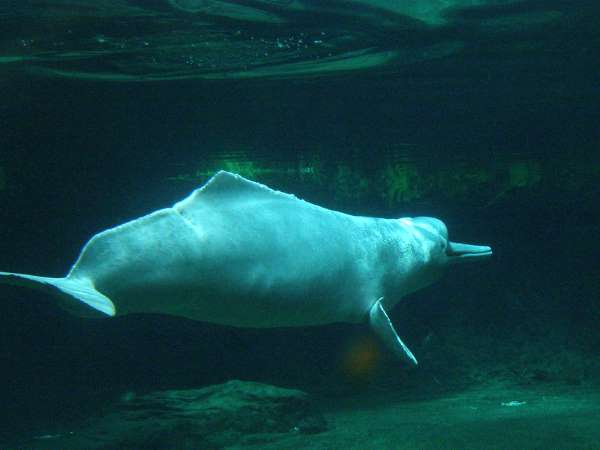
These pink dolphin behaviors were described as “playful and inventive to the extreme”. Gewalt highlighted at that time not only the use of different types of balls, sticks, pots and brushes as tools or toys, but also, to the surprise of many, that the dolphins constructed “self-made air bubble rings to swim through or air bubble ‘beds’ to lie on.”
Pink dolphin scientific name
Inia geoffrensis (Blainville, 1817) is the scientific name of at least one of the species of pink dolphin also called boto, bufeo, Amazon dolphin or tonina, a species of odontocete cetacean mammal of the family Iniidae.
In addition, within the odontocetes, the pink dolphin belongs to the superfamily Platanistoidea, i.e. river dolphins, which is made up of two families: Platanistidae and Iniidae, to which the genus Inia belongs.
Species and subspecies of Amazonian dolphins (taxonomy).
Scientists still do not agree on the number of Inia species or their subspecies.
Since the pink dolphin was first formally described by the French zoologist Henri de Blainville in 1817, who catalogued it as Inia geoffrensis, other species and subspecies have been proposed according to different physical characteristics and, more recently, mitochondrial DNA.
The pink dolphin of Bolivia ¿ Inia boliviensis or Inia geoffrensis boliviensis?
In 1834 another French naturalist and zoologist named Alcide d’Orbigny noticed some important differences in the dentition (fewer teeth) and in the skull (smaller size of the neurocranial cavity) of the pink dolphins in Bolivia, proposing that they belonged to another species that he called
Inia Boliviensis
(Best & da Silva, 1993)
.
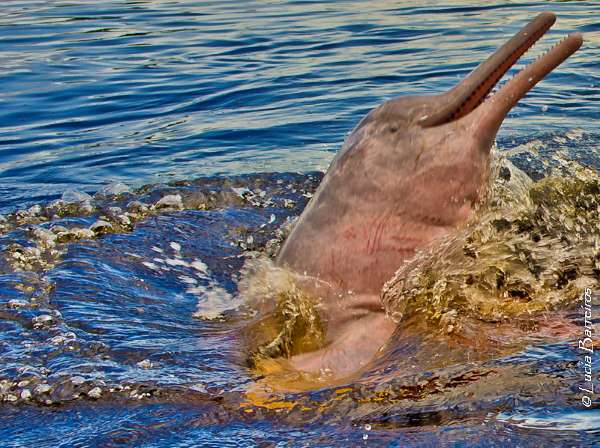
Although that species has been recognized as such by genetic and morphometric studies (Banguera-Hinestroza et al., 2002; Martínez-Agüero et al., 2006; Ruiz-García et al., 2006, 2007, 2008; Ruiz-García, 2010) by 2017 the Society for Marine Mammalogy’s Committee on Taxonomy continued to recognize only one species Inia Geoffrensis to group all Amazonian pink dolphins in general with two subspecies Inia Geoffrensis Boliviensis and Inia Geoffrensis Geoffrensis Geoffrensis. (da Silva, 2018).
The Orinoco dolphin
Many other authors admit an additional species, Inia Humboldtiana, which designates the populations of pink dolphins or toninas that inhabit the Orinoco River basin in both Colombia and Venezuela (Pilleri and Gihr, 1978; Da Silva & Martin 2000; Hamilton, 2001).
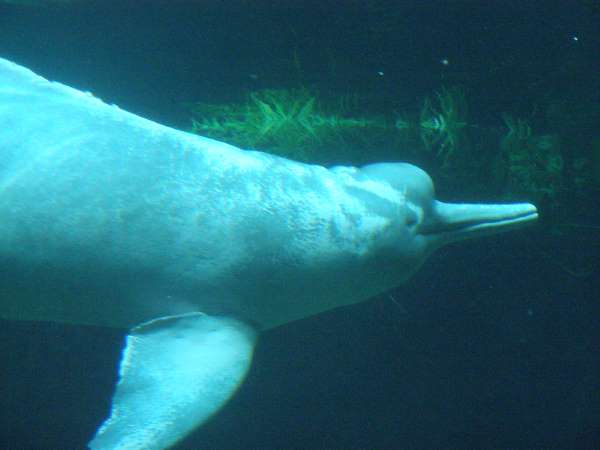
Another unconfirmed species of amazon river dolphin: Inia Araguaiensis
In the basin of the Brazilian Araguaia and Tocantins rivers, other tributaries of the Amazon, a group of researchers led by the Czech Tomás Hrbek of the Laboratory of Evolution and Animal Genetics of the General University of Amazonas (Brazil) described in 2014 what they claim is a new species of Amazon river dolphin that they named Inia araguaiaensis, that thesis was defended in 2016 by another research work led by the biologist Salvatore Siciliano of the Oswaldo Cruz Institute (Curitiba, Brazil).
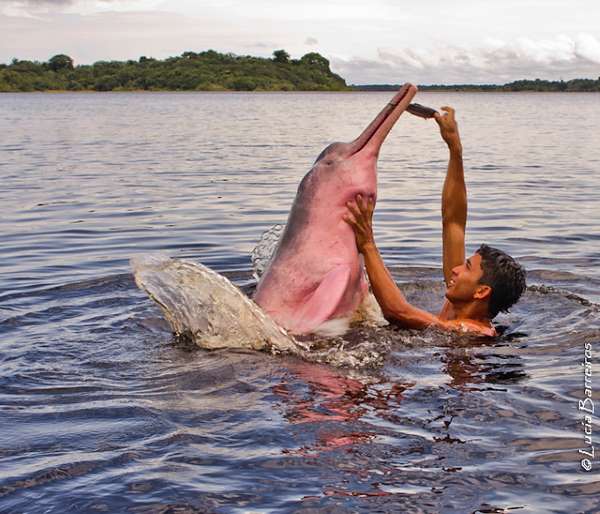
Other river dolphin species around the world include: the La Plata river dolphin (Pontoporia blainvillei) in the southern American continent, the Yangtze river dolphin in China (Lipotes vexillifer) and the Indian river dolphin (Platanista gangetica).
What does the pink dolphin eat?
Amazonian River dolphins feed on crabs, small river fish such as catfish and piranha, as well as small turtles.

They are frequently located near waterfalls and at the mouth of rivers, when schools of fish break up, making it easier to catch them.
Reproduction
Females reach maturity between six and seven years old, while males reach maturity much later.
Their breeding season is seasonal and coincides with the dry season, when the water level is low and the gestation period lasts between nine and twelve months. Females give birth when the Amazon River is at its maximum level, between May and July.
Calves weigh 80 kg at birth and lactation lasts up to one year, with two to three years between pregnancies, only one calf every two to three years and lactation lasts more than one year.
Evolution of river dolphins
Regarding their evolution, in 2001 research led by Healy Hamilton and funded by the University of California (Berkeley) and the Yubarta Foundation (Cali, Colombia) attempted to elucidate the possible origin of river dolphins based on a phylogenetic analysis of 3 mitochondrial genes in 29 cetacean species.
Hamilton (2001) suggests that the ancestors of the 4 extinct river dolphin lineages (Inia, Pontoporia, Lipotes and Platanista) “colonized the shallow epicontinental seas that flooded the Amazon, Parana, Yangtze and Indo-Gangetic river basins,” during the middle Miocene approximately 14 million years ago.

Source: Rubens Curvelo[CC BY-SA 4.0 ]
As the waters receded, the ancestors of these species were confined to living in freshwater rivers and had to adapt to survive in their new habitat.
It is estimated that 3.5 million years ago (Hollatz et al. 2011) a population of dolphins was trapped in the rivers of the Bolivian low plains, by a barrier of 400 km of rapids for which this species or subspecies evolved in isolation currently presenting morphological characteristics different from those of inia geoffrensis such as a smaller skull and fewer teeth (ALIAGA-ROSSEL 2012).
Other genetic studies
A group of researchers led by Calatan biologist Manuel Ruíz-García, a professor at the Javeriana University in Colombia, analyzed 200 samples of pink dolphins in 19 rivers of the Amazon-Orinoquía basin during 3 years.
The researchers found, among other things, that the population of red buffleheads in the basin in general was apparently “healthy” in terms of its gene pool, with the exception of the Bolivian Amazonian rivers.
According to these specialists, pink dolphins in Bolivia are “vulnerable” due to “less genetic interaction among their populations”.
The research published in 2007 was supported by Colciencias (Colombian governmental agency supporting science and technology), the Environmental Action Fund and a number of Amazonian indigenous communities in Bolivia, Peru, Ecuador and Colombia.
A year later, these specialists showed that the pink dolphin or colored dolphin of Bolivia was genetically “a different evolutionary unit” (Ruíz-García, 2008), which has evolved in isolation from the other dolphins of the Amazon-Orinoquía basin.
3 threats to pink dolphins
These beautiful creatures have lived for centuries in the Amazon and its tributaries, however, the accelerated destruction of the Amazon basin has placed them on the Red List of threatened animals (da Silva, 2018)

Source: Ingrid Ribeiro Escramozine Bello Pipa[CC BY-SA 4.0].
Among the imminent threats mentioned by the study led by Da Silva and published by the International Union for conservation of nature IUCN (International Union for conservation of the nature.) we have:
1. Mining and water pollution
According to the International Organization for the Conservation of Nature (WWF) and the International Union for Conservation of Nature (IUCN), the increase in mercury contamination levels has caused a significant number of deaths in the pink dolphin population.
Especially those near gold mines where mercury is used as part of the gold extraction process.
Of all the dolphins that inhabit the great Amazon-Orinoco basin those with the highest level of mercury contamination are those in the Orinoco River (Da Silva, 2018).
2. Incidental fishing
Increased traffic and industrial fishing or trawling in the Amazon River also threatens these creatures. Dolphins are prone to get caught in nets or manatee traps.
Specialists estimate that in 2010 at least some 176 dolphins were victims of fishing activity.(Brum 2011, Brum and da Silva 2016).
3. The use of pink dolphin meat as bait.
Vera M.F. da Silva del Instituto de Pesquisas da Amazonía (Brazil) has conducted a series of research studies that have highlighted the vertiginous decline of its populations, especially in the Amazon rainforest, in the year 2000, when the use of dolphin meat as bait became popular.
Apparently the catfish known as Piracatinga (Calophysus macropterus) which is highly valued in the markets, has a special predilection for pink dolphin meat.
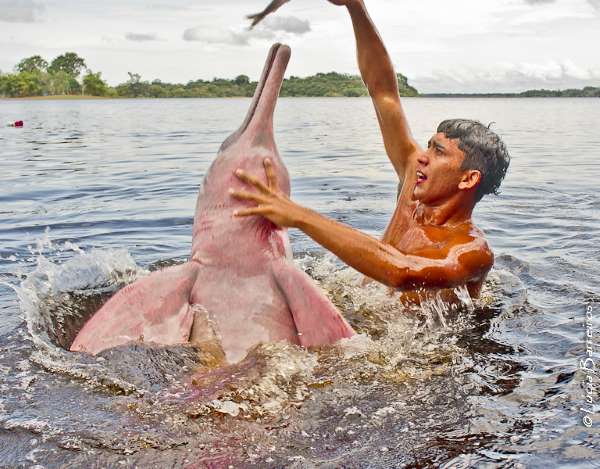
In 2015 Da Silva demonstrated how hydroelectric complexes affect dolphins.
Subsequently, in 2017, Da Silva denounced the continued hunting of this animal.
Further results of their ongoing research were published in 2018, according to which the Amazon pink dolphin population “has declined by 70.4% in the last 22 years (da Silva et al.2018).”
Other threats include trade in pink dolphin products, fishing with explosives, and contamination of waters with pesticides and agricultural chemicals.
In addition, the noise produced by machines, engines and the noise pollution caused by them, is believed to produce a disconcerting phenomenon in their navigation systems, thus causing the death of many pink dolphins.
Curious facts about the pink dolphin
The University of Salamanca published on its website that the pink dolphin is much more flexible and slower than the oceanic dolphins.
This is because during the flood season, their habitat is filled with trees and part of the forest floor, creating an obstacle course through which the dolphin must move when searching for prey.
An additional fact about the Amazon dolphin is that it can live up to 30 years .
Somewhat sexist habits have also been recorded among amazon river dolphin, as lactating females with small young tend to stay in oxbow lakes or lagoons and small tributaries where the waters are calmer while adult males roam the main rivers (Trujillo 1997, McGuire and Winemiller 1998, Denkinger 2001, Hollatz et al. 2011).
Pink dolphin legend – El Bufeo Colorado
According to Amazonian tradition, the tonina is a magical creature that takes human form and emerges from the river to seduce men and women and take them to an enchanted city under the water.
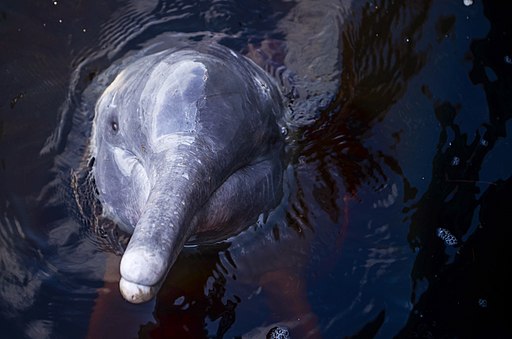
Likewise, it is said that the dolphin pretends to be a person wearing a hat, so that the spiracle and bulbous forehead are not visible.
Local legend also tells that young women on the days of their menstruation and on the nights of the full moon, when they enter the waters of the Amazon River or go down the river in a canoe, can count on the visit of the pink dolphin that will come to impregnate them.
For this reason pink dolphins are credited as fathers of all fatherless children in the region.
The amazing empathy of the pink dolphin with humans encourages the tourism industry, lovingly invites us to care for and defend the preservation and balance of their natural habitat.
Drawing for coloring
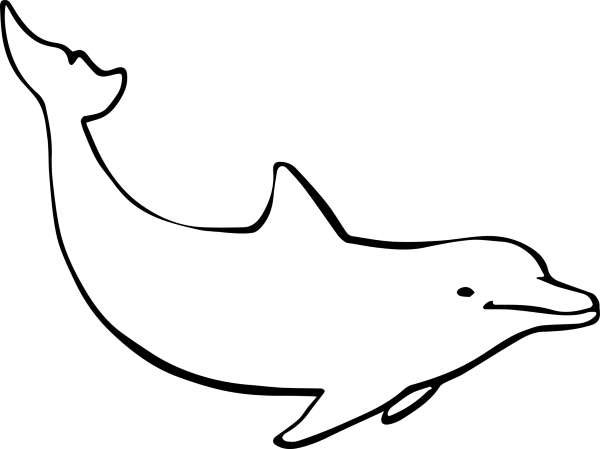
Bibliography
- Brum, S.M. 2011. Interaction of Amazonian golfinhos with fishing in the middle Solimões. Master of Science thesis, Instituto Nacional de Pesquisas da Amazônia, Manaus.
- Brum, S.M. and da Silva, V.M.F. 2016. Amazon Dolphins Interactions with Fisheries in Central Amazon, Brazil. Anais XVII Reunión de Trabajo de Especialistas em Mamiferos Acuáticos de América del Sur. Valparaíso, Chile.
- da Silva, V., Trujillo, F., Martin, A., Zerbini, A.N., Crespo, E., Aliaga-Rossel, E. & Reeves, R. 2018. The IUCN Red List of Threatened Species: Inia geoffrensis. http://dx.doi.org/10.2305/IUCN.UK.2018-2.RLTS.T10831A50358152.en
- Gewalt, W. (1989). Orinoco-Freshwater-dolphins (Inia geoffrensis) using self-produced air bubble ‘rings’ as toys. Aquatic Mammals, 15(2), 73-79. http://aquaticmammalsjournal.org/share/AquaticMammalsIssueArchives/1989/Aquatic_Mammals_15_2/Gewalt.pdf
- Healy Hamilton1*, Susana Caballero2, Allen G. Collins1 and Robert L. Brownell Jr. 2001. Evolution of river dolphins
https://www.ncbi.nlm.nih.gov/pmc/articles/PMC1088639/pdf/PB010549.pdf
- Pilleri G, Gihr M (1977) Observations on the Bolivian (Inia boliviensis d’Orbigny, 1834) and the Amazonian bufeo (Inia geoffrensis de Blainville, 1817), with a description of a new subspecies (Inia geoffrensis humboldtiana). Invest Cetacea 8: 11-76.
- Ruiz-García M., A. Murillo, C. Corrales, N. Romero-Aleán, D. Álvarez-Prada. 2007. Genetics of Amazonian populations: the evolutionary history of the jaguar, ocelot, pink dolphin, woolly monkey and piuri, reconstructed from their genes. Animal Biodiversity and Conservation 30.2 Bogotá, Colombia.
- Ruiz-Garcıa, M., Caballero, S., Martinez-Aguero, M. and Shostell, J.M. 2008. Molecular differentiation among Inia geoffrensis and Inia boliviensis (Iniidae, Cetacea) by means of nuclear intron sequences. In: Koven, V.T. (ed.), Population Genetics Research Progress, pp. 177-203. Nova Publishers Inc., Boca Raton, FL, USA.
- R. H. Penner and A. E. Murchison. EXPERIMENTALLY DEMONSTRATED ECHOLOCATION IN THE AMAZON RIVER PORPOISE, INIA GEOFFRENSIS (BLAINVILLE). 1970. Ocean Sciences Department. . By members of the Marine Bio Science Divüyon. Vnork was performed from March 1969 to December 1969. Hawaii USA.
- TAVERA Gabriela , BECERRA Pilar , RUÍZ-GARCÍA Manuel, CARVAJAL-VALLEJOS Fernando M., SALINAS MENDOZA Adriana and VAN DAMME Paul A. FAUNAGUA. 2011. THE BOLIVIAN DOLPHIN (INIA BOLIVIENSIS) IN THE BOLIVIAN AMAZON: DISTRIBUTION, POPULATION STATUS AND THREATS. Cochabamba-Bolivia http://www.faunagua.org/biblioteca/3Cap5.pdf

Daniel Osorio holds a BA in Social Communication with a mention in Communication for Humanistic Development (Universidad de Los Andes, 2005). Film and TV director and screenwriter. Specialist in Digital Marketing (SEO, SEM, Adwords, Adsense). General Manager (CEO) at DMT Agency. He is the founding editor of the portal delamazonas.com among others.
Related Posts
May 25, 2020
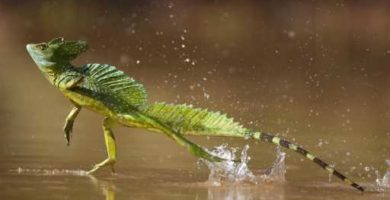
Jesus Christ (Basilisk) Lizard
May 8, 2020
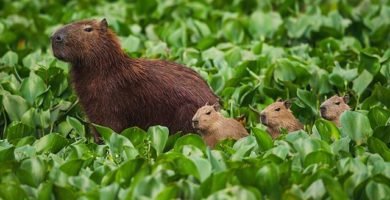
Capybara or chigüiro
April 20, 2020
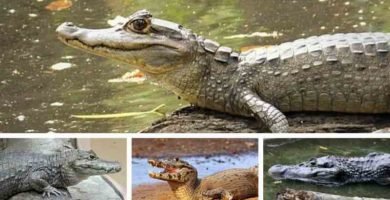
Caimans – Top Three Amazon Rainforest Crocodiles
April 10, 2020

Giant animals of the Cenozoic Era in the Amazon Rainforest
March 25, 2020
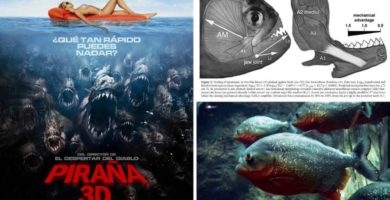
The piranha: spirit of evil?
March 20, 2020
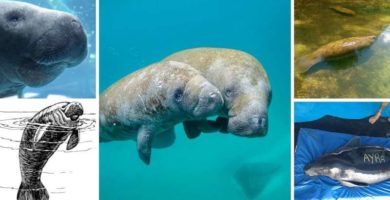
The Amazonian manatee (Trichechus inunguis)
This post is also available in:
![]() Español (Spanish)
Español (Spanish)
